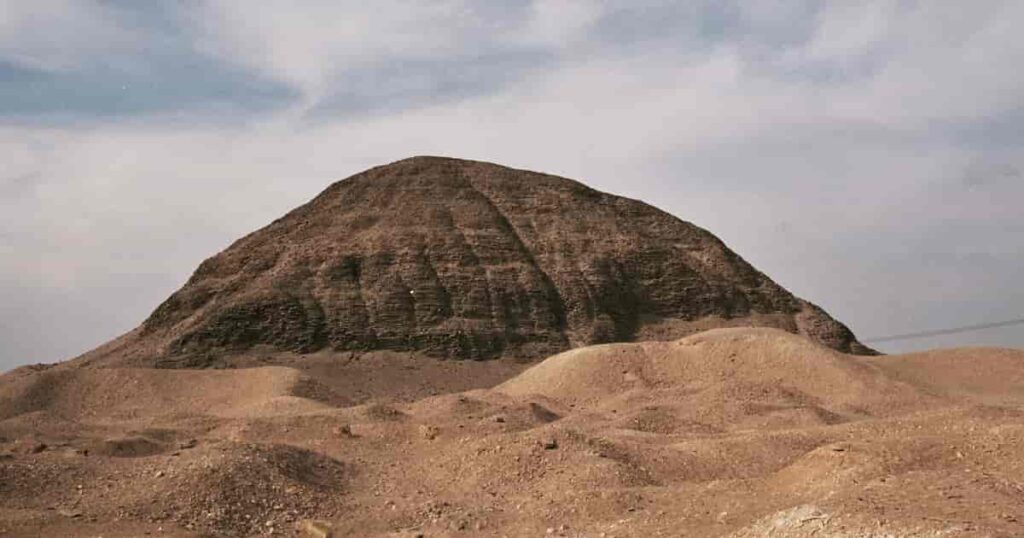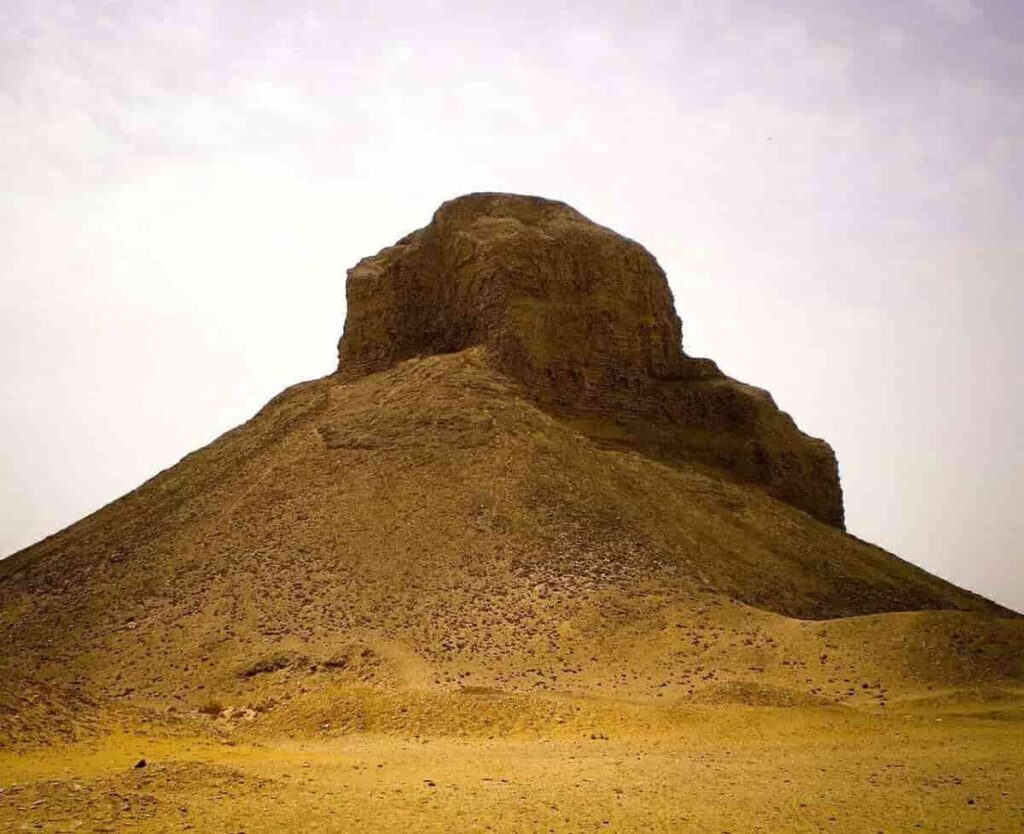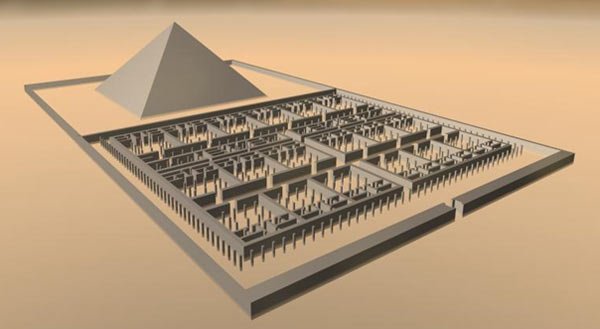Around 2,500 years ago, ancient Egypt boasted a massive “labyrinth” that, in the words of a renowned ancient Greek historian who witnessed it, “surpassed even the pyramids.”
For millennia, the Great Labyrinth of Ancient Egypt remained a tale within this world. However, archaeologists are now uncovering the lost history and intriguing evidence confirming its actual existence.
The Great Labyrinth of Ancient Egypt stood as a colossal two-story structure. Within it lay 3,000 distinct rooms, all intricately interconnected through a labyrinthine maze of passages so intricate that no one could navigate without a guide.
At its base lay an underground level serving as a tomb for the kings, while at the summit, a massive ceiling crafted from enormous stone slabs loomed overhead.
Numerous ancient writers vividly described witnessing this labyrinth firsthand. Yet, after 2,500 years, its precise location remains uncertain. The closest discovery is a colossal 300-meter-wide stone plateau that some believe might have been the foundation of the Lost Labyrinth. Nonetheless, the upper levels of the structure have vanished over the centuries.
To date, no one has excavated or entered it. Until the Labyrinth is reached, certainty eludes us regarding whether we have truly stumbled upon one of Egypt’s greatest archaeological wonders.
The Revelation by Herodotus
For Herodotus, Egypt was an eternal source of amazement and inspiration, much like it was for many Greeks. It stood as a land of remarkable architectural accomplishments.
Herodotus personally witnessed numerous ancient Egyptian marvels, including the Lost Labyrinth, and described them accurately. In the second book of his work “The Histories,” penned in the 5th century BC, Herodotus detailed the Labyrinth:
“It boasts twelve covered patios, arranged in two rows of six, facing north and south, with one set of doors directly opposite the other.
This two-story structure houses three thousand rooms, with half situated underground and the other half directly above them.
I was guided through the upper-level rooms and can speak from personal experience about them. However, regarding the subterranean rooms, I can only relay what I was told since the overseeing Egyptians refused my request to view them. These underground chambers supposedly house the tombs of the labyrinth’s constructing kings and the revered crocodiles.
The upper rooms, though, I did witness, and it’s almost unbelievable that they were crafted by human hands. The bewildering and intricate passages leading from room to room and patio to patio left me in perpetual wonder as we traversed from patios to rooms, galleries, and then to more rooms, followed by additional patios.
Like the walls, each chamber, patio, and gallery boasts a stone ceiling. The walls are adorned with carved figures, while each courtyard is meticulously crafted from white marble and encircled by a colonnade.”
Herodotus, The Histories
The precise location of the Great Labyrinth remained a mystery for an extended period. Herodotus visited the “legendary” Labyrinth of ancient Egypt nearly 2,500 years ago, but the edifice has vanished into the mists of time since then.
The Discovery of Professor Flinders Petrie
In 1888, Professor Flinders Petrie possibly identified the real location of the ancient Egyptian labyrinth at Hawara. Sufficient original foundations remained, allowing for a rough estimation of the size and orientation of the structure.
The Labyrinth spanned about 304 meters in length and 244 meters in width. In simpler terms, it was spacious enough to accommodate the grand temples of Karnak and Luxor!
Hawara: The Pyramid of Pharaoh Amenemhat III
Amenemhat III, the last influential ruler of the 12th Dynasty, constructed his initial pyramid at Dahshur, known as the “Black Pyramid,” which faced construction challenges and was ultimately abandoned.
Around the 15th year of his reign, the king opted to erect a new pyramid at Hawara, close to the Faiyum. The pyramid at Dahshur served as the burial site for several royal women.
The pyramid at Hawara is believed to have been Amenemhet’s final resting place. At Hawara, there also existed the intact pyramidal tomb of Neferu-Ptah, daughter of Amenemhat III. This tomb was discovered roughly 12 km south of the king’s pyramid.
It is speculated that the extensive mortuary temple originally positioned adjacent to this pyramid served as the foundation for the complex of structures, including galleries and courtyards, referred to as the “labyrinth” by Herodotus and mentioned by Strabo and Diodorus Siculus.
Dahshur: The Black Pyramid and the Pyramidion
The Black Pyramid was constructed by King Amenemhat III (1860-1814 BC) during Egypt’s Middle Kingdom period (2055-1650 BC). It stands among the five remaining pyramids of the original eleven at Dahshur in Egypt.
Initially named “Amenemhet is Mighty,” the pyramid garnered the title “Black Pyramid” due to its dark and deteriorating appearance, resembling a heap of debris.
While the oldest known pyramid in Egypt was erected around 2630 BC in Saqqara for King Djoser of the third dynasty, the Black Pyramid was the first in Egypt designed to entomb both the deceased pharaoh and his queens.
However, Pharaoh Amenemhat III was not laid to rest here. His burial took place in the Hawara pyramid, adjacent to the legendary Labyrinth.
The pyramidion, the apex stone of a pyramid or obelisk, featured religious inscriptions and symbols. Some inscriptions were deliberately defaced, leading researchers to conclude that the pyramidion was either unused or intentionally marred during Akhenaten’s reign.
The pyramidion, also known as a Benben stone, takes its name from the myth of the creation of the Heliopolitan form of ancient Egyptian religion. Benben was the mound emerging from the primordial waters Nu, upon which the creator deity Atum settled.
The original Benben stone, named after this mound, held sacred significance in the temple of Ra at Heliopolis. It was revered as the spot where the sun’s first rays fell.
It is believed to have served as the prototype for subsequent obelisks, and the upper stones of the great pyramids were modeled after its design.
The bird deity Bennu, likely inspiring the immortal bird Phoenix, was venerated in Heliopolis, where it was said to inhabit the Benben stone or the sacred willow.
Numerous Benben stones, often adorned with images and inscriptions, can be found in museums worldwide, with the pyramidion of the “Black Pyramid” among these revered artifacts.
The Lost Egyptian Labyrinth – New Discoveries
For centuries, the tale of the Great Egyptian Labyrinth existed solely as a legend passed down through generations. It wasn’t until Egyptologist Flinders Petrie unearthed its “foundations” in the late 1880s that experts began theorizing about its existence. Some suggested that the labyrinth was dismantled during the reign of Ptolemy II and repurposed to construct the nearby town of Shedyt, dedicated to his wife Arsinoe.
However, in 2008, archaeologists conducting the “Mataha Expedition” stumbled upon a remarkable discovery beneath the sands. During their scans of the base area in Hawara, they detected compelling evidence of intricate chambers and walls several meters thick buried at considerable depth.
The findings of the research team substantiated the presence of archaeological features situated south of the Hawara pyramid of Amenemhat III.
The scans revealed vertical walls averaging several meters in thickness, forming numerous enclosed rooms.
Conclusion
The Great Labyrinth of Ancient Egypt was personally visited and documented by esteemed historians from ancient times. Nevertheless, it succumbed to the sands of the desert, its physical existence remaining unknown for over 2,500 years.
In this 21st century, we’ve uncovered ruins that, below the surface, resemble an underground labyrinth akin to those described by ancient writers. Yet, the question lingers: Is the Great Labyrinth of Ancient Egypt real, or does it persist as an enigmatic historical mystery?









